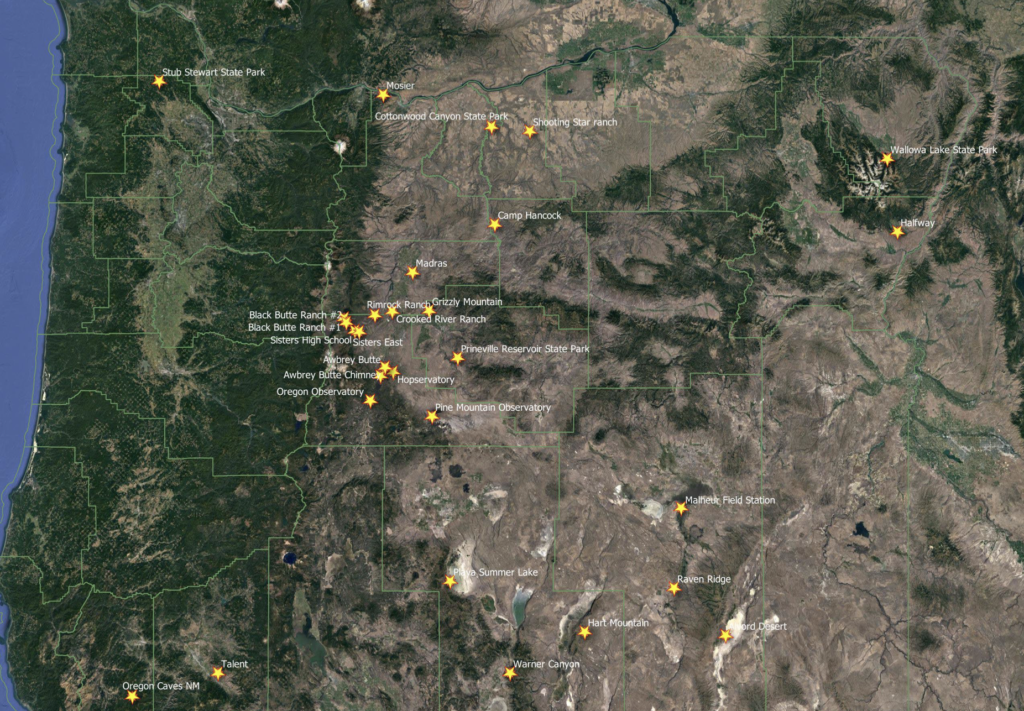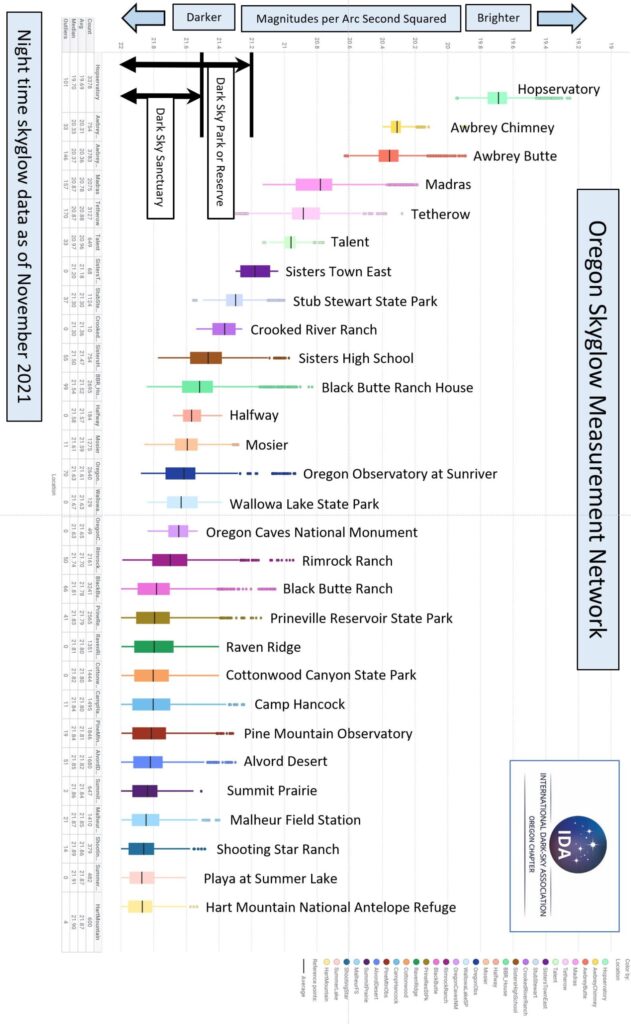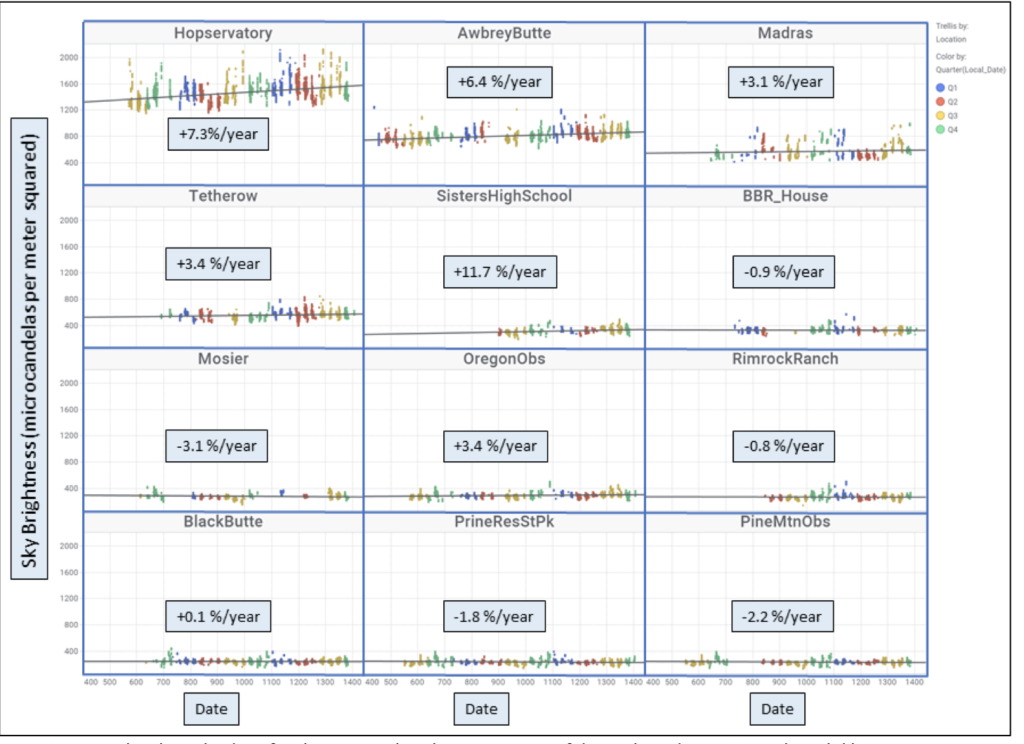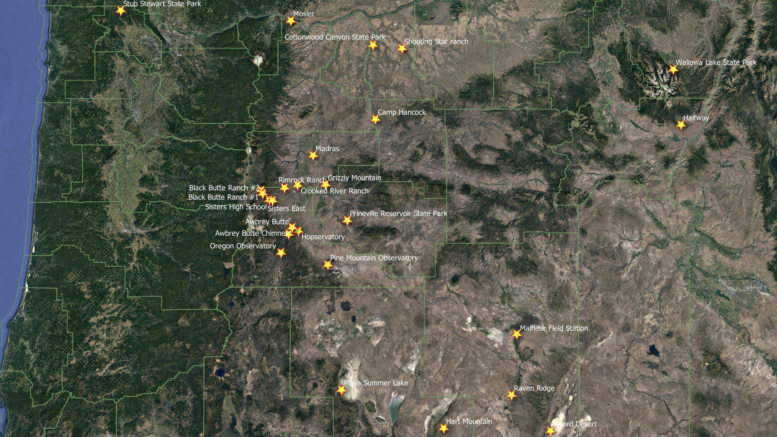Every 6 months the Oregon chapter of the IDA puts out its report for how the SQM, Sky Quality Meters, have been doing regarding analyzing sites for select Oregon dark sky sites. Having these SQM in several locations across the state of Oregon provides the IDA chapter with the opportunity to not only find trends over time, but also see how effective steps taken in specific areas are at reducing light pollution. These trends and data points help save our dark skies in the Pacific Northwest.
In their 5th report, the Oregon chapter of the IDA has expanded their collection to a few new sites and helped determine new trends. As shown in Figure 1 below, many of these sites are well known in the astronomy community in Portland, such as Stub Stewart State Park, and others are new that provide opportunities to do new stargazing. (insert other well known sites)

With this data, what we are seeing is that the IDA Chapter is pushing for several new dark sky sites, and the 2 dark sky places in Oregon are still dark enough to maintain their dark sky accreditation. There are also so really cool trends that the SQM data is showing. The data is from November 2021, and was released in April 2022.

Measurements at sites currently working toward Dark Sky Place certification also “include Cottonwood Canyon State Park, Wallowa Lake State Park, Black Butte Ranch, Oregon Caves National Monument, the City of Sisters, the Pine Mountain Observatory and large areas of the Outback of southeastern Oregon. Measurements in the Oregon Outback document pristine night skies overhead.”
Popular Sites/Interesting Details
Here are a few notes about specific places that we have highlighted as unique astronomy sites for users to visit as well as notable sights for normal astronomy activities by the community.
Stub Stewart State Park – Located in .., Stub Stewart State Park is a favorite place for the Rose City Astronomers to have star parties as well as a favorite of astronomers all over the Portland Metro area. Stub Stewart was found to have the best SQM value of 21.60, which would make it a Rural/suburban transition, and at worst, it was found to be 21, which is still a Bortle 4 scale.
Prineville Reservoir is 58% darker than Stub Stewart.
Cottonwood Canyon State Park is slightly darker than Prineville Reservoir and is 59% darker than Stub Stewart.
Interesting Trends
What is interesting is that some places are doing more and others are doing less to improve their light pollution. And what is crucial is that this data is plotted using at least 18 months of data, which will provide some great trends.

This shows which sites have enough data to provide trends, which helps everyone learn that is working well, what isn’t working well, and take steps to apply those steps to other locations to preserve the dark sky. What it also shows is which sites are getting darker, so it can help astronomers know which sites to visit and will continue to visit in the years coming. Moreover, it shows which sites to visit before they become too light polluted. What is interesting here is that Prineville Reservoir State Park is decreasing in light pollution, which will continue to make the site even better going forward.
To check out the full report, check out the darkskyoregon.org website. Make sure to follow us on Twitter and Instagram, and make sure to view our other unique astronomy sites such as this one for more places to view astronomy in the Pacific Northwest.

Leave a comment